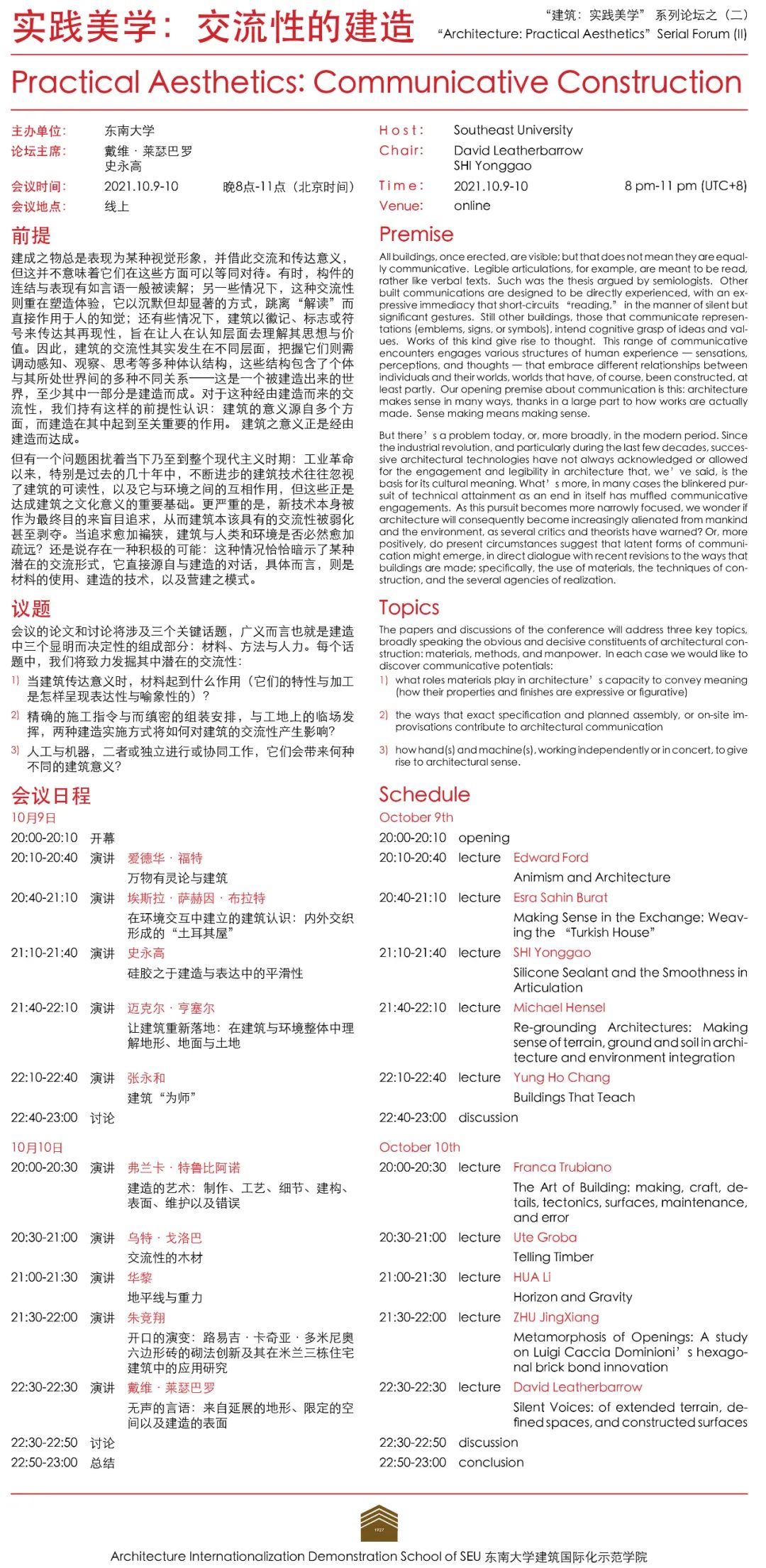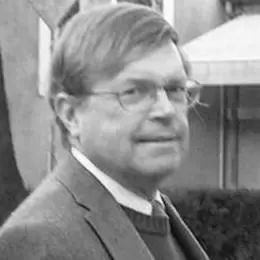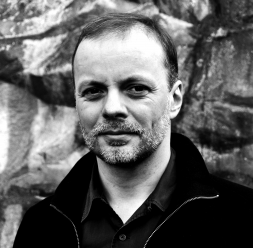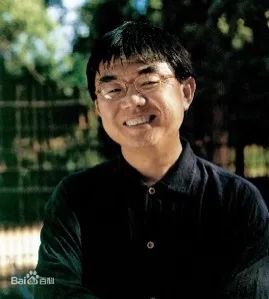“建筑:实践美学”系列论坛之(二)
“ARCHITECTURE: PRACTICAL AESTHETICS” SERIAL FORUM (II)
实践美学:交流性的建造
Practical Aesthetics:Communicative Construction
主办单位 / HOST
东南大学建筑国际化示范学院
Architectural Internationalization Demonstration School, Southeast University
论坛主席 / CHAIR
戴维·莱瑟巴罗
David Leatherbarrow
史永高
SHI Yonggao
论坛日期 / DATE
2021.10.9-10.10
论坛时间 / TIME
8pm-11pm (UCT+8)
ZOOM线上召开 / To be held online withZOOM

(点击图片跳转会议详细介绍)
演讲者及演讲内容简介Introduction of Speakers and their Lectures
戴维·莱瑟巴罗
David Leatherbarrow
东南大学建筑国际化示范学院教授,外籍院长
宾夕法尼亚大学建筑学院荣休教授
Professor and Foreign Dean of Architecture Internationalization Demonstration School at Southeast University
Professor Emeritus, University of Pennsylvania
题目
无声的言语:来自延展的地形、限定的空间以及建造的表面
Silent Voices: of extended terrain, defined spaces, and constructed surfaces
摘要
本次演讲将探讨建筑独有的交流形式——一个在当下问题重重的议题,尤其当其他艺术形式宣称对设计的诸话题负有责任时,建筑更加无法回避。相较于概念上的自主,与现实中的交缠将被区分开来。建筑的交流形式具有多声部的特点,尽管这种交流的言语无法被实际听到;而在无声这点上,建筑同人类的手势一样具有相似的表现方式。本次演讲将回顾几位当代建筑师的作品,也会涉及一些乡土传统的案例。并非笼统地探讨这些建筑,而是聚焦于单一的建筑构件——格栅,它将被定义为一首地形学意义上的无声之歌。
This talk will inquire into the forms of communication that are specific to architecture, a problematic issue today, when other arts claim responsibility for topics of design that architecture itself cannot avoid. A distinction will be made between autonomy in conception and engagement in realization. Architectural communication will be characterized as polyvocal, though its voices aren’t exactly audible; in point of fact silent, expressive in the manner of human gestures. The work of several contemporary architects will be reviewed, also examples from vernacular traditions, not in general, but in consideration of a single constructed element, the lattice screen, which will be described a silent song of topographical sense.

爱德华·福特
Edward Ford
弗吉尼亚大学建筑学荣休教授
Professor emeritus of Architecture at University of Virginia
题目
万物有灵论与建筑
Animism and Architecture
摘要
19世纪时,人类学与达尔文进化论几乎同时出现,这并非偶然。自然和文明都被视为进化的产物。欧洲代表着充分发展的文明,而其他大陆的“原始”文明终将进化至该阶段。许多原始社会具有万物有灵论的烙印。在泛灵论的文化中,每一件物体,尤其是树或石头,都具有人格。每件物体都有其内在的精神,即灵魂。诸多泛灵论文明产生了各自的建筑类型,这些建筑与建造它们的材料密不可分。日本的神道文化造就了伊势神社,一个从内在生命——占据着每一块木头的“神(kami)”——中生长出来的建筑。在欧洲人看来,这是一种迷信。基督教传统与柏拉图哲学将现实世界视为对理想世界不完美的再现——橙子是球体的不完美表现。这种文化同样产生了其独有的艺术和建筑。阿尔伯蒂认为,建筑起源于理想的几何形式,而不是物质实体。材料是无关紧要的。他的理论产生了一种注重外表的建筑,其中只有建筑表面以及我们对它的观察是重要的。阿尔伯蒂的建筑理念并没有消失。虽然当下建筑中的几何学着重参数化,不再局限于柏拉图式的几何原型,但几何仍然是起点。但事实是,一种受万物有灵论影响的建筑长期存在于欧洲文化中。欧洲与美国的建筑史一直充斥着各种例外与异端,对那些异见者来说,形式并非来自外在的理想化的形状,而是源于内在的建筑自身的材料。例如,米开朗基罗的雕刻是为了释放石头内部本就存在的形式,而赖特则是在材料的本性中寻找形式,以及当代设计师斯迈扬·拉迪克、玛赛拉·科雷亚和安东·阿布里尔,他们以物而非几何作为起点。
It is not an accident that the birth of the science of anthropology in the nineteenth century was coincident with the appearance of Darwinian theories of evolution. Both nature and culture were seen as evolutionary. Europe represented the fully developed culture that “primitive” cultures of other continents would evolve into. Many of these primitive societies were characterized as animistic. In animistic cultures every object, especially trees or rocks, is a person. It has an inner spirit, a soul. Animistic cultures produced their own types of architecture, one inseparable from the materials of which it is made. The Shinto culture of Japan produced the Ise shrine, a building growing out of the inner life, “the Kami, “who occupy each piece of wood. To the European mind this was superstition. The traditions of Christianity and Platonic philosophy saw the real world as an imperfect representation of an ideal one-the orange is an imperfect manifestation of a sphere. This also produced its own art and architecture. Alberti tells us architecture originates in ideal geometric forms, not physical objects. Material is irrelevant. It produced an architecture of external appendance in which the surface and our perception of it were all that mattered. Albertian ideas of architecture have not gone away. The geometry is parametric today, not Platonic, but geometry is still the point of origin. But the truth is European culture has always had an architecture of animism. European and American architectural history is filled with outliers, heretics for whom form came not from external idealized shapes but from within the material of buildings themselves-Michelangelo, seeking to release the form already existing in the stone as he carved, Frank Lloyd Wright who sought form in the nature of the materials, and contemporary designers, such as Smiljan Radic, Marcela Correa, and Anton Abril- who begin not with geometry but with objects.

埃斯拉·萨赫因·布拉特
Esra Sahin Burat
东南大学建筑国际化示范学院副教授
Associate Professor of Architecture Internationalization Demonstration School at Southeast University
题目
在环境交互中建立的建筑认识:内外交织形成的“土耳其屋”
Making Sense in the Exchange: Weaving the "Turkish House"
摘要
19世纪是技术进步和风格复兴的时期,对建筑中的技术与艺术方面的关注同时发生,却也基本彼此独立。19世纪也是一个国际展览和考古探索的时代。对上述诸议题,德国建筑师森佩尔都有所关注,并在他的开创性论文《建筑四要素》中对这些议题进行了理论化探讨。其中,他着重研究了欧洲主要国家首都中展出的古代和当代的人造物。他认为,炉灶、屋顶、围墙以及地台是建筑必不可少的组成部分,并以此为基点,他展示了这些要素在建筑史上是如何被运用的。
本文通过研究“土耳其屋”的建筑表达,对森佩尔的论文提供了一种解读。“土耳其屋”本身就是一个有争议的术语,其广义上指从17世纪到20世纪在小亚细亚内部及周边地区蓬勃发展的本土传统建筑。本研究提出,房屋的基本单元——房间(oda)——作为一个多功能的被围合起来的建筑体,从早期的帐篷住所(otag) 演化而来,用森佩尔的话来讲,它“保护火源”(od)并 “与其他元素相协调”。土耳其屋的材料和建造建立了房间和环境(街道/花园/城市)之间的互动,将看似分隔的实体编织在一起,使“环境整体的秩序和形状”变得可见。最终,本文对建筑等同于“建造+再现”的二元相加公式提出了质疑,旨在将人们对意义的关注与探索移到物与物之间的交互中。
The nineteenth century was a period of technological advancement and stylistic revivals. Alongside the concurrent yet largely independent interests in the technical and artistic aspects of architecture, it was also the age of international exhibitions and archeological explorations. Interested in all of these topics and theorizing in his seminal thesis, The Four Elements of Architecture, German architect Gottfried Semper examined with great interest the ancient and contemporary artifacts under display in major capitals of Europe. Proposing that the hearth, the roof, the fabric wall, and the mound had been the essential components of architecture, he set out to show how these had been employed in the history of architecture. This paper offers an interpretation of Semper’s thesis by investigating the architectural articulation of the “Turkish House.” Itself a contested term, “Turkish House” broadly refers to the domestic tradition that flourished from the 17th to the 20th centuries within and around Asia Minor. The study proposes that the basic unit of the house –the room (oda)—, which served as a multifunctional enclosure that evolved from earlier the tent dwellings (otag), “defended the fire” (od), and “negotiated with the elements,” as described in Semper’s words. The materials and the construction established interactions between the rooms and the environment (street/garden/city), weaving together seemingly disparate entities and making visible “the order and the shape of the whole.” Ultimately, the paper calls into question the dualistic and additive formula that has equated architecture to “construction + representation” and aims to shift the attention and the search for meaning to the exchanges between things.

史永高
SHI Yonggao
东南大学建筑学院教授,外籍院长助理
Professor and Assistant Foreign Dean of Architecture School at Southeast University
题目
硅胶之于建造与表达中的平滑性
Silicone Sealant and the Smoothness in Articulation
摘要
过去200年间,以钢铁和混凝土位代表的结构材料的“发明”带来了广泛的建筑革新。然而,某些非结构性材料的应用也产生了同样重大的变化,而其中一些材料,如硅胶,并不容易被注意到。本报告将首先通过几个中国当代建筑和欧洲现当代建筑,来考察硅胶在建筑中所起作用:1)实现愈发完美的透明性并带来的视觉渗透上的平滑性;2)增强建筑围护体的性能表现并带来建筑表面建造中的平滑性;3)去除内外高差从而促进内外之间的运动,这带来了身体经验上的平滑性。随后,报告将对硅胶的实际性能提出疑问,分辨其中的“利”与“弊”。最后,对不同程度的平滑性所赋予建造的交流能力进行理论层面的拓展与思考,即在技术创新不断加速的时代,如何通过身体的参与来丰富建筑多层面的“可见”性(或者说交流性)。对硅胶的应用及其引发的结果所做的初步考察将会证明,在建筑中,辅助材料绝非无关紧要,无足轻重者有时意义非凡。对硅胶的得体使用,有可能因其多维度的平滑性让建造更具交流性。当然,前提是建筑师拥有一种创造性的谨慎与细致。
The past two centuries have witnessed extensive revolutions brought about by the invention and improvement of structural materials, such as steel and concrete. However, the application of certain non-structural materials has effected no less weighty changes, and some of these materials, like silicone sealant, are not readily noticeable. This study will start with some observations on the roles that silicone sealant plays in a few cases: 1) the smoothness of visual interpenetration due to the perfected transparency; 2) the smoothness of surface construction owning to the enhanced building envelope; and 3) smoothness of comprehensive experience thanks to bodily movement. Then, questions will be framed about the actual performances of silicone sealant, weighing the gains and losses. In the end, theoretical speculations will be made concerning the communicability empowered by various degrees of smoothness, that is, how architectural legibility can be enriched through bodily engagement in a time of constant and accelerating technological innovation. The study of silicone sealant’s uses and effects may demonstrate that in architecture the accessorial matters and should be able to render construction communicative with a sort of smoothness.

迈克尔·亨塞尔
Michael Hensel
维也纳工业大学教授,建筑科学研究所数字建筑与规划研究部主任
Professor and Head of Research Department of Digital Architecture and Planning at the Institute of Architectural Science at Vienna University of Technology
题目
让建筑重新落地:在建筑与环境整体中理解地形、地面与土地
Re-grounding Architectures: Making sense of terrain, ground and soil in architecture and environment integration
摘要
在对会议前提的描述中,“建造在建筑的意义中起到至关重要的作用”,这可以延伸至“为谁”和“为何”建造的问题上。在这种背景下,本文重点落到了建筑与地形、地面和土地之间的关系上。在当下普遍的建造意图与目的中,相较于日常建筑的建造,处理建筑与土地的关系变得次要,这只能作为准备工作,或者次级应用——例如覆土的绿色屋顶。这篇论文拟议:1)为了让建筑不再进一步疏离于人类与环境,仔细地处理建筑与场地的关系必不可少;2)一种人与自然间广泛的互动应当成为人与其他物种的生活环境的有机组成,在城市环境中尤其如此。我们如何理解、建造与解读建筑,会带来诸多不同并影响深远。在本次发言中,会议的三个议题被延伸为如下问题:1)地形、地面和土地在建筑提供体验的能力中扮演什么角色(建筑的可读性被扩展至不同类型的环境关联,并涉及更广泛的参与者);2)对“建筑是什么”或者“建筑能提供什么”这样的问题而言,时间有着怎样的影响,并且这种影响又如何更新了建筑的规范与规划,如何改变了人们应对环境变化的方式。3)这种方式怎样改变了建筑建造、维护以及适应环境的方式。最后,通过延伸,如何通过融合当地传统的使用土地的实践,使重新落地的建筑受益。
The opening premise of the symposium “architecture makes sense … thanks in a large part to how works are actually made” is extended to the questions for whom and why. In this context focus is placed on the relation between architectures and terrain, ground and soil, which have, for all intents and purposes, become all but secondary to the making of everyday architecture, by only being implemented as preparatory work or secondary applications such as green roofs. The presented thesis posits: 1) that it will be necessary this course of actions for architecture not to become increasingly alienated from mankind and the environment and 2) that a broad range of human-nature interactions are desired as part of the living environment for humans and other species especially in cities. The consequences for how architectures are understood, made and read are potentially far reaching. In this talk the three questions posed in this conference are extended as follows: 1) what role can terrain, ground and soil play in architectures capacity to provide experiences (reading extended to different types of engagement and to a broader scope of stakeholders); 2) how does time bear on what an "architecture" is or can provide at any given moment in time and how does this change specifications, planning, and the management of change; 3) how does this approach change how architectures are made, maintained and adapted. And, by extension, how can the proposed repositioning of architecture benefit from an integration of traditional local practices of using ground.

张永和
Yung Ho Chang, FAIA
非常建筑创始人、主持建筑师麻省理工学院建筑系实践教授
Founding Partner and Principal Architect, Atelier Feichang Jianzhu (FCJZ)Professor of the Practice, MIT
题目
建筑“为师”
Buildings That Teach
摘要
通过我们近期完成的几个实践项目,我想探讨两个问题:如何通过认真推敲的搭接,让建构构件得以鲜明地表明建筑立场;并且,如何使具有清晰意图的空间组织,帮助校园成为教学法和教育的有机组成部分。
Through a series of recent projects produced by our practice, I would like to discuss how thoughtfully articulated tectonic components may serve as powerful manifestations of architectural positions; furthermore, how spatial organization of university campus with clear intentions could constitute an integral part of pedagogy and education.

弗兰卡·特鲁比阿诺
Franca Trubiano
宾夕法尼亚大学设计学院建筑学副教授
Associate Professor of School of Design at the University of Pennsylvania
题目
建造的艺术:制作、工艺、细节、建构、表面以及维护
The Art of Building: making, craft, details, tectonics, surfaces, maintenance
摘要
建造也是一种艺术,这种观念被当代建筑师、历史学家和理论家所坚持。这种认识持续启发着人们将建筑实践与形式建造(它基于工艺、细节呈现、建构的概念化、表皮的喻象化)相关联,并且让人意识到甚至是后期维护也能对建筑产生重要影响。对持有此类观点的人而言,回归一种伦理的建筑实践——它强化了物质性思考在建筑中的地位——既是理想的,也是可能的。对他们来说,“营”与“造”,设计与施工,理论与实践,这些都两两彼此相关。本文讨论了人类学家蒂姆·因戈尔德、社会评论家理查德·森内特、历史学家肯尼斯·弗兰姆普敦等人的文本,他们都认为建造的交流性不仅通过其物质性也通过其思想性来达成。正是这种精神促使本研究回归建造的艺术。有关建造艺术的讨论虽被建筑与美学错位的阴影所笼罩,但在对建构(techné)的当代解读中,这种讨论仍日益兴盛。本文将“后68”作者的建筑研究与相关的建筑作品结合起来,探讨了制作、工艺、细节、建构、表面、与维护之间的持久共鸣。
The art of building as an idea has persisted amongst contemporary architects, historians, and theorists. It continues to inspire those who associate architectural practice with forms of making predicated on craft, the articulation of details, the conceptualization of tectonics, the figuration of surfaces, and with awareness that even maintenance impacts architecture. For this group of thinkers, returning to an ethical practice of building, which cultivates a role for material thinking in architecture, is both desirable and possible. For them, measure is bound to making, design to construction, and theory to practice. This paper discusses the writings of anthropologist Tim Ingold, social critic Richard Sennett, historian Kenneth Frampton and others for whom construction communicates through thoughts and things. This is the spirit that animates this paper’s return to an art of building, which albeit shrouded by the shadow of architecture’s misalignment with aesthetics, prospers amongst contemporary readings of techné. Pairing architectural scholarship by post-68 authors with allied works of architecture, this paper speaks to the enduring resonance of making, craft, details, tectonics, surfaces, and maintenance.

乌特·戈洛布
Ute Groba
奥斯陆建筑与设计学院博士与研究员,建筑师PhD and Research Fellow at The Oslo School of Architecture and Design, Architect
题目
交流性的木材
Telling Timber
摘要
本次演讲关注的是建筑构造及其物质性对使用者的意义,以及因此引发的我们对建成环境的长期欣赏。延长建筑寿命主要有两个原因:一是尽量减少建造行为对环境的影响,二是避免干预已经成熟的邻里社区。可以说,这种寿命的延长不仅取决于建筑自身的坚韧性(如材料的耐用性和布局的适应性),还取决于对人们对建筑的喜爱程度。然而,与可量化的指标或技术解决方案相比,那些让建筑变得“可爱”的品质更难以被指明、评价或让人一致认同。因此,它们通常被描述为“心照不宣”的品质,它们是含蓄而非喧嚣的,只会被暗示出来。与此同时,许多语言表明“可爱”含有交流性的要素。吸引人或令人愉快的事物在德语中被称为“ansprechend”,在挪威语中被称为“tiltalende”。在字面上,它们意为“称呼某人”,“和某人说话”。那些被认为“可爱”的建筑与你交流,试图排解你的困扰,向你倾诉,从而对你产生意义。这又引发了诸多问题:哪些心照不宣的品质是用户所关心的,它们如何通过建造的物质性来交流?接收者需要什么来接收这些信息?建筑师如何促进这种对话?本次演讲将聚焦于木材,提出建筑材料和居民可以通过三种方式进行对话,它们分别基于木材的属性、感知与价值。这种理解框架的达成基于参观中欧与斯堪的纳维亚一些城市中的木制房屋,并有赖于访谈它们的建筑师和居民。
This talk is concerned with ways in which architectural construction and its materiality may make sense to the user and thus raise the long-term appreciation of our built environment.There are two main reasons for prolonging the lifetime of buildings; one is to minimize their environmental impact, another one to avoid disrupting grown neighbourhood communities. Arguably, this prolongation not only depends on the robustness of the buildings (e.g. the materials' durability and the layout's adaptability), but also on how much they are appreciated. The qualities that contribute to the "lovability" of architecture are however much more difficult to specify, assess or agree upon than quantifiable aspects or technical solutions. They are therefore often described as "tacit" qualities – qualities that are implied, not said aloud, only hinted at. At the same time, many languages indicate a communicative component of lovability. Something appealing, attractive or pleasant is called "ansprechend" in German or "tiltalende" in Norwegian. In a literal sense, this means "addressing someone", "speaking to someone". Architecture that is perceived as lovable speaks to you, it addresses your concerns, has something to say, makes sense to you.This raises a number of questions: Which tacit qualities are of concern for the user, and how can they be communicated by the construction's materiality? What does it require from the recipient to take these messages? How can architects facilitate this dialogue?With a special focus on timber, this presentation is going to propose three ways in which construction materials and residents may get into conversation with one another, relating to wood's properties, perceptions and values. The suggested framework is informed by visiting a number of urban timber housing projects in Central Europe and Scandinavia and by talking to their architects as well as their inhabitants.

华黎
HUA Li
迹·建筑事务所(TAO)创始人及主持建筑师
Founder and Principal Architect of TAO
题目
地平线与重力
Horizon and Gravity
摘要
地平线寓意着建筑与大地的基本关系,上升或下降,漂浮或沉入,形式浮现;重力寓意着形式如何实现,结构、材料、构造如何回应形式的愿望。地平线与重力构成了建筑中必须观照的要素,也从更根本意义上呈现人与环境的关系。
Horizon refers to fundamental relation between architecture and earth. Ascending or descending; floating or buried, form thus appears. Gravity refers to realizations of form: how structure, materials, tectonic respond to the aspiration of form. Horizon and Gravity consist of two reflective aspects in architecture, and reveal our essential relationship with the environment.

朱竞翔
ZHU Jingxiang
香港中文大学建筑学院教授
Professor of School of Architecture at the Chinese University of Hong Kong
题目
开口的演变:路易吉·卡奇亚·多米尼奥尼六边形砖的砌法创新
Metamorphosis of Openings: A study on Luigi Caccia Dominioni’s hexagonal brick bond innovation
摘要
研究发掘了路易吉·卡奇亚·多米尼奥尼二十世纪中叶在米兰设计的三幢集合住宅:方济各教派圣安东尼修会、 圣母玛利亚修道院、公寓楼十八号。研究着眼于异性砖块设计与砌法组织,探究它们对形态生成所发生的调控,如何最终帮助立面形成独特的开口组织。这些做法在实现住居景观、通风、隐私功能的同时,回应了战后重建、预制施工的经济性要求,衔接了古典语汇,注入了现代的多义性。研究也证明,对材料使用、施工技术与现实限制的阅读是可靠的研究路径,而着眼于演化的案例安排,将赋能静态的建筑物——使之能自发地向后代讲解并提问。
This research introduces three collective residential buildings designed by Luigi Caccia Dominioni in Milan in1950-60s: Convento di S. Antonio dei Frati Minori, Convento e Istituto della Beata Vergine Addolorata, Condominio in via Massena 18. The research focuses on the innovation of hexagonal bricks, then explores how the bond organization regulates the formation of facade form. While realizing the habitational functions on view, ventilation, and privacy, these facades responded to the economic requirements of post-war reconstruction. The unique openings enriched the classical vocabulary of facade design with new ambiguities inspired by the modern movement.The research first showcases how the readings of material use, construction technology, and practical limitations is still a reliable approach for the dialogue with the pioneers, then proves that case selection with a focus on metamorphosis will empower the static buildings, to be more narrative and more attractive for the younger generations’ inquiries.



